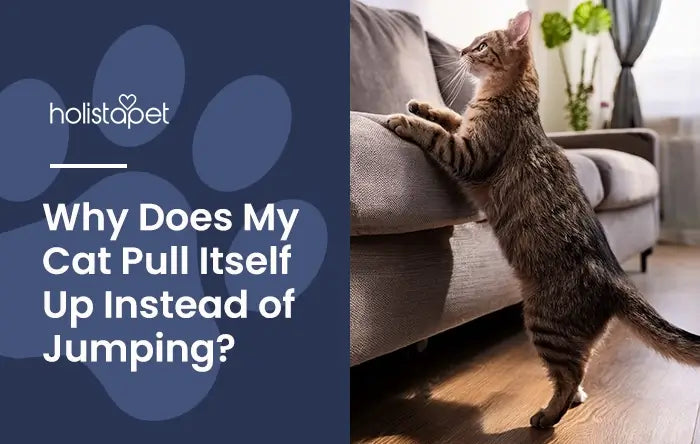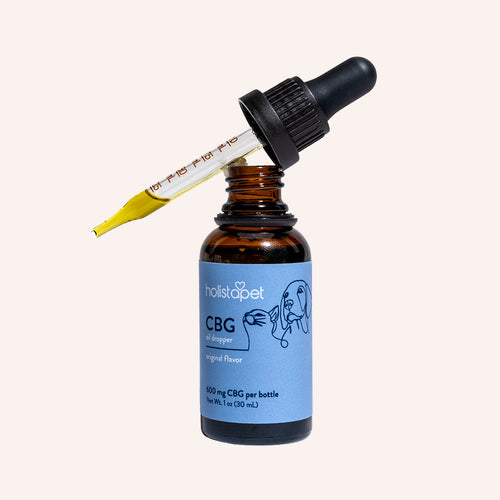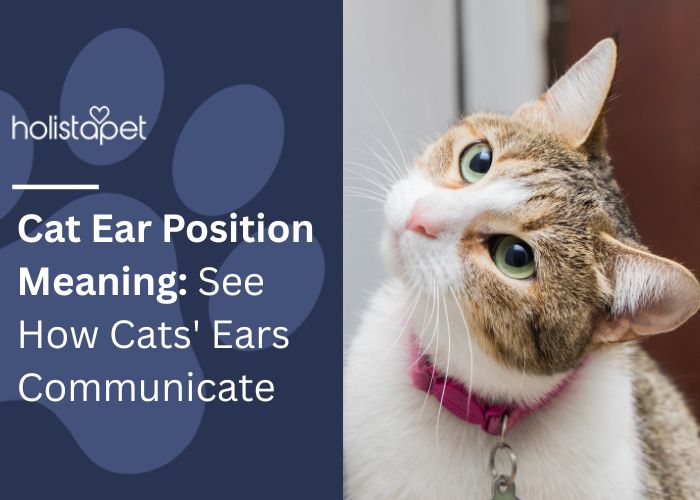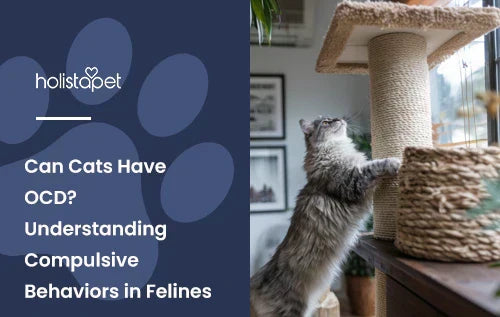Your cat pulls herself up instead of jumping, and you can't help but wonder what's going on. Maybe she used to leap onto the bed with ease, but now she claws her way up with a little grunt of effort. It's her body giving you a clue that something might feel different.
Cats love high spots, from cat trees to counters, so when your kitty starts pulling instead of springing, it often points to reduced strength or sore limbs. Small shifts in how she moves can reveal a lot about her comfort, confidence, and playful spirit.
When Cats Stop Jumping Normally

When cats have difficulty jumping, something is usually bothering them. She might plant her front paws first and push up slowly, or skip high places altogether. Those subtle changes often point to weakness or soreness that makes leaping uncomfortable.
Senior cats and those with mobility issues may look fine while walking but hesitate when faced with a bed or couch. Watch for signs like decreased activity, careful movements, or extra time spent on one floor. A quick vet visit and physical exam can help verify what's going on.
Why Jumping Is a Natural Part of Feline Behavior
Jumping is part of what makes cats so graceful and confident. From the moment they're kittens, leaping becomes second nature. It helps them stretch their muscles, stay mobile, and satisfy their curious streak. Their strong back legs and flexible joints give them that smooth, springy lift-off we all admire.
Many kitties use jumping to feel secure and survey their space. High places, like cat trees or window sills, let them settle and keep an eye on their surroundings. When a feline avoids jumping or changes how she climbs, it signals that something's interrupting her usual rhythm and confidence.
What It Means When Your Cat Starts Pulling Herself Up
Most cats rely on their strong hind legs for lift, but when that power fades, they use their front limbs for help. This behavior often hints at reduced strength, joint aches, or even stiffness from age or past injuries. If your kitty seems less confident getting onto furniture or cat trees, she may be feeling sore or unsteady. It doesn't always mean something serious, but it's worth checking early.
Common Reasons Cats Have Trouble Jumping
Many felines adapt quietly when something feels uncomfortable, using their front limbs to prop up or skipping high spots entirely. Watching for these changes helps spot potential mobility issues early. Here are the most common reasons cats struggle to jump:
- Aging and Natural Joint Wear
- Muscle Weakness or Reduced Strength
- Soreness or Lingering Pain From Past Injuries
- Weight Gain and Extra Pressure on Joints
Aging and Natural Joint Wear

As felines grow older, their bodies naturally lose flexibility. What once felt effortless—like jumping onto a couch—can start to feel tricky. Many senior cats develop stiffness or arthritis that makes them rely on their front paws more than their back legs. You might observe slower movements, hesitation before climbing, or less time spent on furniture and cat trees.
Older cats with reduced mobility may also prefer staying on one floor. Their muscles and joints simply don't respond like they used to. A soft bed, easy access to food and the litter box, and a gentle routine can help aging and arthritic cats stay comfortable and confident.
Related Post: How To Tell How Old a Cat Is [Physical Age Indicators]
Muscle Weakness or Reduced Strength
Cats depend on their back legs for spring and balance, and when those muscles lose power, jumping becomes harder. Reduced strength can come from age, less activity, or recovering from a past injury.
Many felines with weaker muscles start showing signs like shorter jumps or slower movements. You might also notice them choosing lower spots to settle. Gentle play, light movement, and a comfy place to stretch can help maintain their strength.
Soreness or Lingering Pain From Past Injuries
Cats are great at hiding soreness, so an old sprain or fall can quietly affect how they move. If your cat keeps dragging herself up, she might still feel some aches or irritation from a past mishap. Even minor injuries can leave behind muscle tension or tenderness that limits her usual spring.
You may see her avoiding high places or hesitating before climbing. These small changes show she's trying to prevent more unease. A quick vet visit can help verify the cause and rule out any deeper problems that might still be bothering her.
Related Post: Cat In Pain Positions [Telltale Signs of Discomfort In Cats]
Weight Gain and Extra Pressure on Joints
When a cat gains weight, her limbs carry more pressure with every step or leap. Over time, this added strain can cause soreness and reduced activity, leading her to yank herself up instead of jumping.
Cats with a bit of extra weight also move more slowly or recover longer between bursts of play. A balanced diet, measured portions, and gentle play sessions can help her regain mobility.
Subtle Signs of Mobility Problems in Cats

Cats are experts at masking aches, so the early signs and symptoms of mobility trouble often slip by unnoticed. Paying attention to these quiet signals can help you step in before the situation worsens. Here are common clues that point to movement issues:
- Preferring Low Furniture or Sleeping Spots
- Hesitating Before Jumping or Climbing High Places
- Moving More Slowly or Carefully Than Usual
- Grooming Less or Having Matted Fur in Hard-to-Reach Areas
Preferring Low Furniture or Sleeping Spots
If your kitty suddenly favors low furniture, it's often her way of avoiding extra effort. Cats that once perched proudly on high shelves may now settle for spots closer to the floor. This shift can mean her hind legs feel weak or sore, making tall jumps less appealing.
Many felines with mobility issues pick cozy areas like rugs, couches, or pet beds that don't require climbing. While it might seem harmless, this change can signal reduced flexibility or tenderness. Keeping her favorite spots within easy reach helps her stay relaxed and feel secure without straining herself.
Hesitating Before Jumping or Climbing High Places
A cat that pauses before jumping is telling you something through her body language. That brief hesitation can mean she's unsure her legs can handle the landing or that jumping causes aches. Many kitties start testing the distance or crouching longer before attempting a leap. This shows that confidence in their movement has faded a bit.
If you've noticed this hesitation around furniture, beds, or cat trees, take it as a gentle warning. Her body might need some extra care. Creating easier access to favorite spots can help her stay mobile without pushing her limits or feeling uneasy.
Moving More Slowly or Carefully Than Usual
When a cat begins to move more slowly or takes careful, measured steps, it's often her way of coping with soreness or stiffness. You might see her walking with extra caution, taking longer to sit or stand, or avoiding quick turns. These small shifts can mean reduced flexibility or tightness.
Cats that once darted around with ease may now pace themselves to stay comfortable. Even a slight limp or pause mid-step can reveal that something feels wrong. Keeping an eye on these changes helps you catch mobility issues early and support her comfort before they worsen.
Grooming Less or Having Matted Fur in Hard-to-Reach Areas
Cats pride themselves on keeping every inch of their coat clean, so when grooming habits change, it's a red flag. If your cat starts showing matted fur or skips cleaning her back or hind legs, it could mean those areas feel sore or stiff. Reaching and twisting take flexibility and strength that she might no longer have.
You might notice dull fur or clumps where she used to groom easily. This unusual sign often appears alongside reduced jumping or slower movement. Helping her with gentle brushing can keep her coat tidy and give clues about her comfort and mobility.
Why Cats Hide Discomfort So Well
Cats are masters of disguise when it comes to showing unease. Their wild ancestors learned to mask weakness to avoid becoming easy targets. That instinct remains strong today. Even when a cat pulls herself up, she'll often act normal in other ways to keep you guessing.
You can catch subtle hints if you know where to look. Watch her body language. Tense posture, pinned ears, or a slower walk can all reveal unease. Many kitties also sleep more or avoid their usual spots. Spotting these quiet signals early helps protect her confidence and comfort.
How Vets Diagnose Mobility and Joint Issues
When your cat struggles to jump or starts hauling herself up instead, a vet can help find the reason. During a physical exam, the vet checks her joints, muscles, and range of motion to see where movement feels restricted. They might gently flex her legs or observe how she walks to identify trouble spots.
If something deeper seems off, the vet may suggest imaging or lab tests to rule out other conditions. These tools help reach an accurate diagnosis and guide proper care. Early detection means better comfort, stronger mobility, and a happier, more confident kitty at home.
Making Your Home Easier on a Cat With Mobility Issues
When a cat's ability to jump starts waning, small changes at home can bring comfort. The goal is to reduce strain while keeping her moving and content. Try these simple improvements:
- Add Pet Ramps or Steps Near Favorite Furniture. Placing ramps or pet steps near couches, beds, or cat trees gives your kitty a simple way up without forcing a big leap. It helps protect her joints and keeps her close to her favorite hangout spots.
- Provide Soft, Supportive Bedding in Accessible Spots. Soft bedding in low, easy-to-reach areas helps her settle comfortably without climbing. Cushioned spots also ease pressure on her joints while she sleeps, keeping her cozy and well-supported.
- Encourage Gentle, Joint-Friendly Play. Play is still important, even for felines with reduced mobility. Choose light activities like wand toys or slow chases to keep her moving without overexertion. Gentle play keeps her engaged, confident, and happy.
Natural Ways To Support Your Cat's Joint Health

Simple, natural habits can make her daily life easier and keep our feline friends feeling playful. If your cat keeps pulling herself up instead of jumping, these small steps can help her stay comfortable and active:
- Benefits of Omega-3 Fatty Acids and a Balanced Diet
- Importance of Light Exercise and Movement
- How CBD Promotes Calmness and Mobility
Benefits of Omega-3 Fatty Acids and a Balanced Diet
A complete and balanced diet supports your cat’s strength, energy, and flexibility. Omega-3 fatty acids, found in certain fish oils, help maintain smoother movement and overall comfort. For cats that pull themselves up instead of jumping, these nutrients can make daily motion feel easier and less tense on the limbs.
Many cats also benefit from meals rich in lean proteins, vitamins, and minerals. These nutrients support strong muscles and steady weight, which both protect joint health. Feeding your kitty a balanced diet keeps her body ready for play, climbing, and those graceful leaps she loves so much.
Importance of Light Exercise and Movement
Gentle movement keeps your cat's body flexible. Even if your cat is unable to jump, she still needs light activity to stay mobile and confident. Slow, playful sessions with wand toys or rolling balls encourage natural stretching without strain.
Short bursts of exercise help maintain balance, strengthen hind legs, and improve circulation. Many cats also enjoy climbing low platforms or walking along furniture paths. Keeping her body in motion supports her comfort and prevents stiffness from setting in.
How CBD Promotes Calmness and Mobility
CBD (cannabidiol) can support your cat's comfort by promoting relaxation and easier movement. For cats that can't jump, CBD may help reduce tension and soothe achy joints, making daily activity less stressful. It works gently with her body to encourage balance and calm behavior.
Many pet parents use CBD to help senior cats feel more at ease. When combined with a balanced diet and light play, it can support smoother movement and better rest. Choosing a trusted, well-formulated CBD product guarantees your kitty gets safe, consistent support for comfort and mobility.
Using HolistaPet CBD Oil, Treats, and Chews for Cats to Support Comfort and Flexibility
HolistaPet's CBD products give pet parents a natural way to help cats move with confidence again. Our CBD oils, treats, and chews can support comfort, flexibility, and calmness. Each product is specifically designed to make daily feline wellness easy, tasty, and reliable.
HolistaPet uses American-grown hemp that meets Farm Bill standards and is rigorously tested by third-party labs for purity and potency. Our broad-spectrum, plant-based formulas contain no THC (tetrahydrocannabinol), additives, or preservatives. Every product is cruelty-free and backed by real reviews and visible lab results online.
When To See a Veterinarian Immediately
Worried about the changes in your cat's movements? Certain signs point to something more serious. Getting an early check helps verify the cause and prevent further discomfort or injury. Here's when to contact your veterinarian right away:
- Sudden Weakness or Refusal to Move. A sharp decline in mobility can signal a major physical problem.
- Visible Limping, Trembling, or Painful Crying. These signs often show acute soreness or injury.
- Changes in Appetite, Grooming, or Behavior. Shifts in routine can reveal deeper issues needing prompt care.
Final Thoughts: Helping Your Cat Stay Active and Comfortable
Watching your cat pull herself up instead of leaping can tug at your heart, but small, caring changes can work. Paying attention to how she moves, rests, and plays helps you catch early signs of stiffness or reduced strength. With a little support, she can keep enjoying her favorite spots and daily adventures.
HolistaPet's CBD oils, treats, and chews offer an easy way to support her comfort and flexibility. Our plant-based formulas, lab-tested for purity and safety, give pet parents peace of mind. Helping your kitty stay active means giving her the gentle care and security she deserves.



 CBD Oil for Cats - Fast Acting
CBD Oil for Cats - Fast Acting
 CBD Cat Treats - Easy Dose
CBD Cat Treats - Easy Dose
 CBD Calming Chews for Cats - Highly Rated
CBD Calming Chews for Cats - Highly Rated
 CBG Oil for Dogs and Cats - Loved by Thousands
CBG Oil for Dogs and Cats - Loved by Thousands





Leave a comment
All comments are moderated before being published.
This site is protected by hCaptcha and the hCaptcha Privacy Policy and Terms of Service apply.